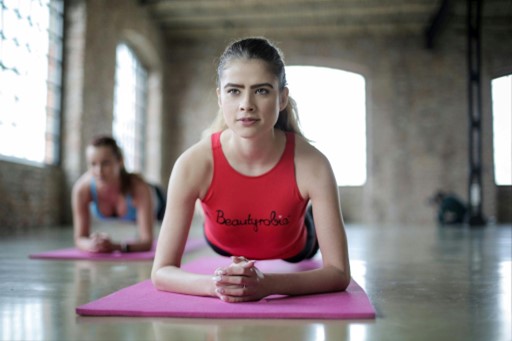Mastering the Plank
Your Key to Core Strength and Beyond.
La’mech Young
3/31/20244 min read


Let's talk about a severely underrated yet fundamental exercise that packs a serious punch: the plank. If you're looking to sculpt a strong, resilient core and unlock a host of other benefits along the way, you've come to the right place. I've witnessed firsthand the transformative power of the plank. So, grab your yoga mat and let's dive into why this exercise deserves a permanent spot in your fitness arsenal.
1. Core Strength, Defined
Let's cut to the chase: when it comes to core strength, the plank reigns supreme.
Why? Imagine your body in a straight line from head to heels, supported by nothing but the sheer force of your core muscles. Sounds challenging, right? That's because it is.
The best analogy I have ever heard to simplify the core’s function in the human movement landscape is akin to the support wires on a radio tower.
Make no mistake—can they create force? Absolutely. However, with the spine being one of your body’s powerhouses of movement generation, what’s the first muscle group protecting you from crumbling under the squat rack? Hint: It’s your core. When you perform a plank, you train the muscle group with this fact in mind.
With challenge comes growth, and by incorporating planks into your routine, you'll sculpt a core of steel that not only looks great but also performs like a well-oiled machine.
2. Beyond Abs: Total Body Engagement
While the focus of the plank is undoubtedly on the core, don't be fooled into thinking it's a one-trick pony. In reality, the plank engages a multitude of muscles throughout your body, from your shoulders and arms to your glutes and legs. By maintaining proper form and alignment, you'll activate these muscles in unison, leading to improved overall strength, stability, and coordination. It's like getting a full-body workout in a single, stationary position—efficiency is always the way to go.
3. Back to Basics: Injury Prevention
In a world filled with flashy fitness trends and complex exercises (i’m looking at you, turkish get-ups), sometimes it pays to go back to basics. Enter the plank, a simple yet incredibly effective movement that can help ward off a myriad of injuries, particularly those related to the spine and lower back.
By strengthening the muscles that support your spine, such as the erector spinae and deep core muscles, planks promote better posture, spinal alignment, and overall spinal health. Say goodbye to those nagging aches and pains and hello to a stronger, more resilient back.
4. Core Stability: The Key to Functional Movement
Ever wonder why athletes and fitness enthusiasts alike swear by the plank? It all comes down to core stability—the foundation upon which all other movements are built. (see: Cell tower analogy) Whether you're running a marathon, swinging a golf club, or simply bending down to tie your shoes, a stable core is essential for optimal performance and injury prevention. By mastering the plank, you'll develop the core strength and stability needed to excel in any activity life throws your way.
Whether you're a raw exercise newbie or a grizzled athlete, there's a plank variation to suit your ability level. You can start with a forearm plank, work up to a full plank, and then progress to unstable plank variations like the Russian Twist or plank jacks once you've developed sufficient core strength.
5. Mind Over Matter: Mental Toughness and Isometrics
Let's not overlook the mental aspect of the plank; after all, holding a static position for an extended period requires more than just physical strength. It demands mental toughness, focus, and discipline. As you grit your teeth and push through the burn, you're not just building a stronger body; you're cultivating resilience, determination, and a never-say-die attitude that will serve you well both inside and outside the gym.
The plank is a rare "no-excuse" exercise that requires no equipment and can be performed anywhere—at home, in a hotel room while traveling, or at the gym. And unlike many core exercises, it's low-impact with no spinal compression, making it a safe option for most people.
Proper plank form is crucial to avoid strain and maximize the benefits. Assume a rigid, straight plank position from shoulders to ankles, resting on your forearms or hands with your body in a straight line. Brace your core by contracting everything from your shoulders to your glutes and quads. Inhale and exhale deeply to keep your muscles oxygenated. And for goodness sake, don't let your hips sag or pike up
Start slow, even aiming for a solid 30-second plank a few times a week if you're new.
Gradually work your way up to maintaining perfect form for 60 seconds or more.
Incorporate different plank variations as well to keep challenging your core in new ways.
Trust me, you'll be amazed at the results.
6. Indirect Benefits: Hello, Pelvic Floor Power!
Oh, and did I mention the indirect benefits of planks? That's right—by engaging the deep core muscles, including those of the pelvic floor, planks can help improve pelvic floor strength and stability. This is especially important for women, as a strong pelvic floor can help prevent issues like urinary incontinence and pelvic organ prolapse
What is pelvic organ prolapse? When organs such as the bladder, uterus or rectum droop and bulge into the vaginal area as a result of weakened muscles or tissues.
So, the next time you hit the mat for a plank session, know that you're doing more than just sculpting your abs—you're investing in your long-term health and wellness.
In conclusion, the plank is more than just a core exercise; it's a game-changer for your entire body and mind. So, whether you're a seasoned gym-goer or a fitness newbie, don't underestimate the power of this deceptively simple movement. Embrace the plank, challenge yourself, and reap the rewards of a stronger, healthier, and more resilient you.

